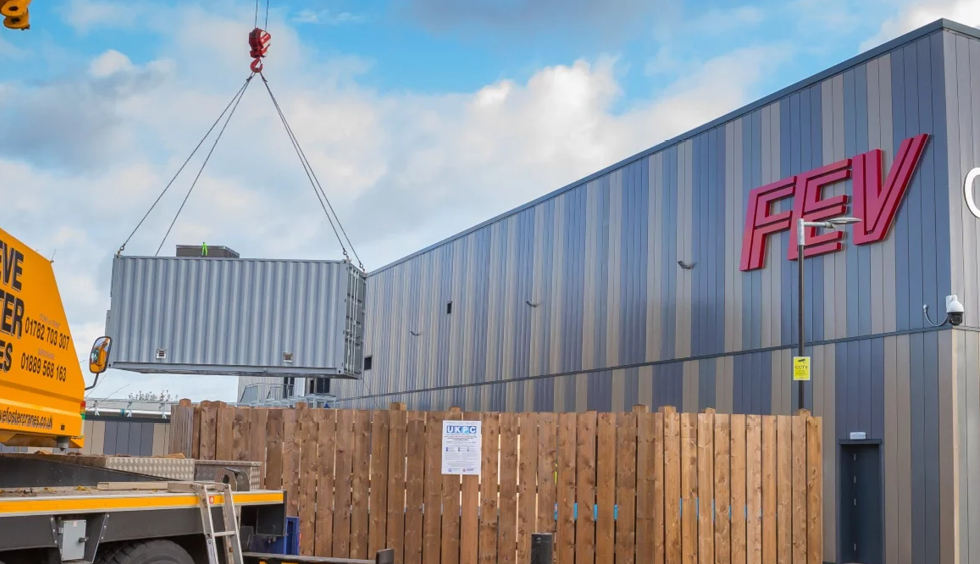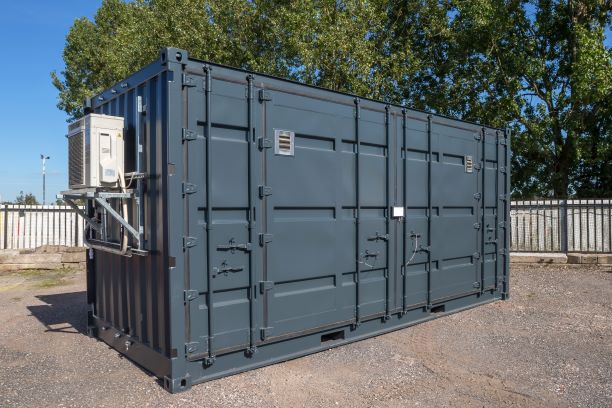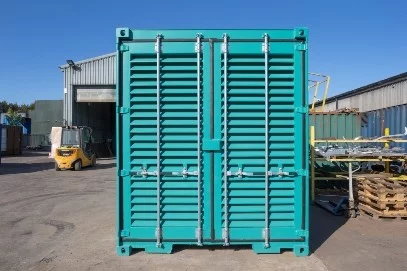Rising demand for battery technology has seen an upsurge in research and development (R&D). One of the major obstacles faced by engineering and research firms is how to create secure, ergonomically designed facilities quickly, effectively, and most importantly safely. Andy Capella, Senior Manager of our Conversions division, has overseen the development of more than 100 purpose-built battery technology sites. Here Andy discusses the key considerations and outlines how to reduce risks in the handling, storage, and development of lithium-ion and other similar battery technologies.
The battery technology market is defined by rapid innovation. However, the speed of this technological progress has meant that standards for the safe development and storage of batteries are practically non-existent. The UK government published its first battery strategy, alongside the Advanced Manufacturing Plan, late last year. The report outlined the government’s commitment to over £2 billion in new capital and R&D funding being made available for the automotive sector. The investment is intended to support the manufacturing and development of zero emission vehicles, their batteries and supply chain for five years to 2030. With high-profile failures such as the 2019 Arizona battery storage fire disaster leading to some guidance on fire suppression, there are still limited sources that outline the main considerations engineers and researchers need to think about when designing or commissioning a new battery store or R&D lab.
Onsite or offsite?

It’s not just the initial outlay, which can run into the £millions, or the lengthy project timelines and planning permissions needed that can make adding a battery store to existing premises unsustainable – it’s also the risk of what could happen if something goes wrong. Even a relatively small leak of the toxic chemicals contained within lithium-ion batteries can cause whole sites to be shut down due to contamination. An example of this is the 2022 fire at Tesla’s PG&E facility in California, which caused the complete closure of a nearby highway. The effects are even worse when confined to an indoor environment. The potential devastating impact of explosion, leaks or fire can also void existing insurance policies or make a site uninsurable all together.
Taking battery stores and development sites away from main buildings is an absolute game changer in terms of risk management. When dealing with any hazardous material, and particularly chemicals, preventing or reducing the number of people who can potentially come into contact with the hazard is key. The benefit of an offsite structure is that policies, procedures and technology can be put into place that will heavily reduce the potential for contact. The R&D labs we have developed for organisations including Warwick Manufacturing Group to test batteries to destruction, ensure that the whole R&D process is entirely contactless. Equally, our bespoke battery storage units for clients including National Grid, allow institutes and organisations to build, test and further improve on future-proof concepts.
The importance of isolation
The next consideration is the internal structure of the store itself. This is where racking plays an incredibly vital role and was one reason why the Arizona incident was not as disastrous as it could have been. Creating separate levels on which to store batteries means that if something goes wrong with one, it doesn’t necessarily result in a domino effect that will see all of the batteries destroyed and a much bigger fallout. A key finding of the Utility Arizona Public Service (APS) investigation into the Arizona fire was that while tiered racking ensured the fire was confined to rack 15 “propagation was facilitated by the absence of adequate thermal barrier protections between battery cells, which may have stopped or slowed the propagation of thermal runaway.” Essentially, there needs to be thermal breaks both between racks and each individual fuel cell to prevent a spread that could cost millions-of-pounds in lost batteries, damage, and clean-up operations.
Fire suppressant

The APS investigation identified that “The [Arizona] fire was caused when a rack of lithium-ion batteries supplied by LG Chem ignited and the fire suppressant that was deployed to douse the fire proved ineffective, leading to a build-up of explosive gases that ignited when firefighters opened a door, sending several to the hospital.” The initial report goes further in identifying that “The total flooding clean agent fire suppression system installed in the Battery Energy Storage Site (BESS) operated early in the incident and in accordance with its design. However, clean agent fire suppression systems are designed to extinguish incipient fires in ordinary combustibles. Such systems are not capable of preventing or stopping cascading thermal runaway in a BESS.
It’s not just the type of suppressant that is used, but also how it is designed and installed to the specific requirements of the battery store. A standard top-down sprinkler system will not penetrate the racking and is unlikely to supress a fire in a given cell. A battery store sprinkler system should be designed in-line with the thermal barriers on the racking to ensure that if a fire breaks out in one individual cell it is confined to that area.
Maintaining temperature control
One of the greatest risks to destabilising the chemicals within a lithium-ion battery is temperature fluctuations. In the case of a container, putting batteries within a steel box without any level of insulation will lead to a complete lack of temperature control. Using Rated Euroclass A1 non-combustible insulation we can insulate a container to the same, if not better, standards as a new home or office. Collaborating with partners we ensure that each store or lab has a high-grade HVAC system designed to the operator’s specific use case and environment. This means that whether the store is sited in Qatar or the Scottish Highlands, temperatures can be maintained at the optimum level for battery storage and the risk of destabilisation is massively decreased.
Explosion proofing (you’re only supposed to blow the bloody panels off!)

A steel box is air and water tight – but that’s not such a good thing when it comes to battery stores. If there is a massive build-up of gasses, it can turn into a bomb or the equivalent of a massive pressure vessel. In the case of the Arizona battery store fire, as previously mentioned, a build up of gasses caused an explosion that led to the hospitalisation of a number of fire fighters.
To mitigate the risk, we build in extra vents to naturally release small level gas leaks. Linked to the HVAC and building management system (BMS) these can be shutdown in the event of fire to avoid fanning the flames. In the case of a major event, ventilation alone isn’t enough – which is where pressure relief and blast panels come in. For low-risk applications this would be a plastic fitting similar to a skylight that simply pops off in the event of a pressure build up. For more complicated applications and R&D labs, there are options that will release the pressure and then close back down to keep any fire or excess gas from escaping.
Early warning and detection
The solutions we’ve discussed so far have focused on mitigation, should there be a major event. However, while the cost of a basic battery store can be as little as £25,000 the batteries themselves can be worth in excess of £100,000, not to mention the risk to life, loss of productivity, and decontamination costs of a catastrophic incident. For R&D labs installing an early heat and gas detection system is essential. These are set to identify toxic gas emissions which could be an early indication of the chemical reaction within one or more batteries having issues. Equally, an unexpected rise in temperatures can provide an early indication, with localised sprinkler systems set to activate over a given temperature to help control any incidents.
Risks of explosion, fire and toxic gas emissions can often mean existing facilities are either impractical or too costly to add to or convert for lithium-ion battery storage and development. From market leaders like Tesla to research organisations, engineering firms and universities, self-contained offsite labs and stores are becoming the rule rather than the exception. A set of standards able to cover the full lifecycle of batteries from transportation, through to testing, utilisation and eventual decommissioning is sorely needed. Until then, I hope this brief guide offers some insight on the key considerations needed when specifying or designing a new lithium-ion battery facility.
Andy Capella is a highly skilled engineer with more than 30 years of experience. Working with S Jones Containers since 2015 he has designed and delivered industrial plant rooms, process engineering facilities, R&D laboratories and battery stores for major engineering firms and projects including Siemens, HS2 and FEV Group. S Jones Containers is the market leader in lithium-ion battery stores and research laboratories.
To find out more visit our Battery Storage Containers page, email andrew.capella@sjonescontainers.co.uk or call 01922 741 756


